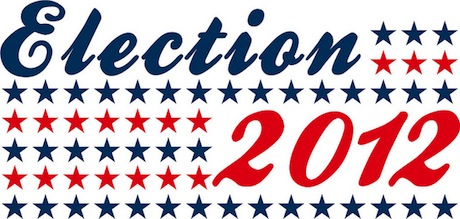Digital Marketing Lessons from the US Election
Not many people know this, but for twelve months in the early 90s, I was Neil Kinnock.
I was working as a copywriter for an agency that held the Labour Party account and it was my job to write all the long direct mail fundraising appeals on behalf of Mr Kinnock.
Our strategy was to build up the supporter base during the run up to the election and then send an unprecedented four mailings during the three weeks or so of run up to the election itself.
And actually, if I say it myself, the fundraising bit was fairly successful… the other bits of the campaign not so much.
We were at the time completely in awe of the fundraising techniques being developed in the United States. On the other side of the Atlantic the fundraising period at that time lasted for some fifteen months before an election (now it barely ever stops.) Consequently in the US they had enough time to test and refine their processes.
I digress slightly, but I remember at the time reading a book about political fundraising which explained how the Republicans had tested a vast number of bought in mailing lists trying to find one which best betrayed political allegiance. After extensive testing they discovered that absolutely the best list for the Republicans was the membership list of a rather strange organisation – the Shammy Leather Owners Club of America.
So there you have it – the activity which best betrays right-wing tendencies is the simple desire to polish your car on a Sunday morning.
Anyway, I haven’t been able to shake off my fascination with politics since then. Like many people in marketing, I’ve come to suspect that elections are not about issues – instead they are won or lost by good or bad marketing.
So in spite of my good efforts, nothing could save Kinnock from his appalling Sheffield Rally (“We’re all right! We’re all right!”) Poor event marketing shepherded in the grey years of John Major.
That was the same election where the Tories rolled out a classic poster – “Labour’s Double Whammy”. Not as powerful of course as “Labour Isn’t Working” from the second Thatcher victory.
Obama’s victory four years ago was generally seen as down to his campaign’s mastery of social media. However the element that impressed me was his use of tactical SMS messages to get the vote out on election day. It turned out that the Obama campaign had captured millions of mobile phone numbers – partly by offering free entry to events like Springsteen concerts in exchange for mobile numbers.
Just as the 2012 Olympics belonged to Twitter, so I think that the micro-blogging site will be hugely important to campaigning in this US election. Twitter’s reach (around 16% in the United States) is puny compared with Facebook, but it is the place to set the agenda amongst opinion formers and journalists.
Here are two recent examples from the current US election.
During the second Presidential Debate, Mitt Romney talked up some pro-women action he had taken as governor to get more women into the cabinet:
“We took a concerted effort to go out and find women who had backgrounds that could be qualified to become members of our cabinet. I went to a number of women’s groups and said: ‘Can you help us find folks?’ and they brought us whole binders full of women.”
That bizarre phrase “binders full of women” was picked up on Twitter where the hashtag #bindersfullofwomen became the top trending topic. Obama’s campaign jumped on the opportunity and bought a promoted tweet against the hashtag which linked to a donation page.
In fact the Obama campaign is clearly thinking in terms of hashtags. They are currently using the tag #romnesia to attack Romney’s tendency to switch positions on key issues. This tweet from Barack Obama’s Twitter account is typical:
“If you say you’ll protect a woman’s right to choose but you say you’d be ‘delighted’ to sign a law outlawing it, you’ve got #Romnesia.”
Social media will play its part, but the US election will also be fought out using the traditional heavy artillery of high frequency TV advertising.
Both campaigns have absolutely vast amounts to spend on TV slots. But there is a fascinating divide in the way that the media spend is actually being spent – which perhaps goes to the heart of the ideological differences between the two candidates.
According to an article in Politico, rather than using a specialist media buying agency “Romney does all his TV buying in-house through a lean operation headed by a single chief buyer.”
This is giving Romney a great deal of flexibility and granular control over buying – but he has missed out on a lot of efficiency gains by not pre-booking TV slots. The Politico article quotes the example of a single commercial break within Wheel of Fortune in which both Obama and Romney advertised. The Obama campaign paid $500 to reach Ohio voters: Romney paid very much more at $2,800 for a spot in the same break.
So this US election pits the skills of a dedicated in-house resource against the deep resources of a specialist agency. For all those in the agency world bemoaning the tendency of clients to take work in house, this could turn out to be a massively thrilling or depressing election result.



